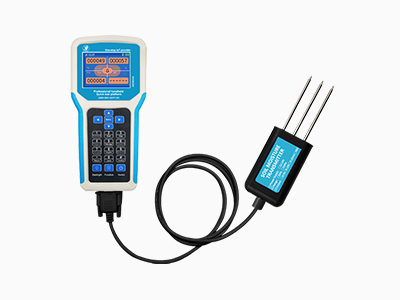Soil sensors are essential tools used in agriculture, environmental research, and landscaping to monitor soil conditions. These sensors provide valuable data on parameters such as moisture content, temperature, salinity, and nutrient levels, which are crucial for making informed decisions about irrigation, fertilization, and plant health. However, there are various types of soil sensors available, each with its advantages and limitations. In this article, we will explore the differences between different types of soil sensors and their applications.

Moisture Sensors:
Moisture sensors are perhaps the most commonly used type of soil sensor. They measure the amount of water present in the soil and help determine irrigation needs. There are two main types of moisture
Tensiometers:
Tensiometers measure soil moisture tension, which is the force required to extract water from the soil. They consist of a porous ceramic cup connected to a tube filled with water. Tensiometers are highly accurate in measuring soil moisture at low tensions but can be affected by changes in soil structure and
Capacitance Sensors:
Capacitance sensors measure soil moisture by analyzing changes in the dielectric constant of the soil. They have electrodes that emit an electric current into the soil, and the resulting capacitance is measured. Capacitance sensors are less affected by soil structure and temperature variations compared to tensiometers.
Temperature Sensors:
Temperature sensors provide data on soil temperature, which is essential for understanding plant growth patterns, microbial activity, and nutrient availability. Two common types of temperature sensors used in
soil monitoring include:
a. Thermocouple Sensors: Thermocouple sensors measure soil temperature using the principle of thermoelectricity. They consist of two dissimilar metal wires joined at one end. The temperature difference between the junction and the free ends generates a voltage, which is proportional to the temperature. Thermocouple sensors have a wide temperature range and are highly accurate.b. Resistance Temperature
Detectors (RTDs):
RTDs use the principle of electrical resistance to measure soil temperature. They consist of a thin wire made of a material with a predictable resistance-temperature relationship, such as platinum. As the temperature changes, the resistance of the wire changes proportionally. RTDs offer high accuracy and stability over a wide temperature range.
Salinity Sensors:
Salinity sensors measure the concentration of salts in the soil, which is crucial for managing irrigation and ensuring optimal plant growth.
Electrical Conductivity (EC) Sensors:
EC sensors measure the soil’s electrical conductivity, which is directly related to its salt concentration. These sensors pass an electric current through the soil and measure the resulting conductivity. EC sensors are simple to use and provide quick measurements but may be influenced by factors like soil moisture and temperature.
b. Dielectric Sensors:
Dielectric sensors measure the soil’s dielectric constant, which is related to its water content and salinity. These sensors emit an electromagnetic wave into the soil and measure the reflected signal. Dielectric sensors offer more accurate salinity measurements than EC sensors but can be affected by soil texture and temperature.
Nutrient Sensors:
Nutrient sensors are used to measure the availability of essential nutrients in the soil, allowing for precise fertilization management. Two common types of nutrient sensors used in soil monitoring include:
Ion-Selective Electrodes (ISEs):
ISEs measure the concentration of specific ions in the soil, such as nitrate, potassium, and calcium. These sensors consist of a selective membrane that selectively binds to the target ion, generating an electrical potential proportional to its concentration. ISEs offer high selectivity and sensitivity but require proper calibration and maintenance.b.
Optical Sensors:
Optical sensors use light absorption or fluorescence properties to measure nutrient concentrations in the soil. These sensors emit light of specific wavelengths into the soil and measure the reflected or emitted light. Optical sensors provide fast and non-destructive measurements but require calibration and can be affected by soil moisture and organic matter.

Conclusion:
Soil sensors play a vital role in monitoring soil conditions and optimizing agricultural practices. Understanding the differences between different types of soil sensors is crucial for selecting the most appropriate sensor for specific applications. Moisture sensors help manage irrigation, temperature sensors provide insights into plant growth patterns, salinity sensors aid in proper irrigation management, and nutrient sensors assist in precise fertilization. By utilizing the right combination of soil sensors, farmers, researchers, and landscapers can make informed decisions, enhance crop productivity, conserve water resources, and promote sustainable land management practices.